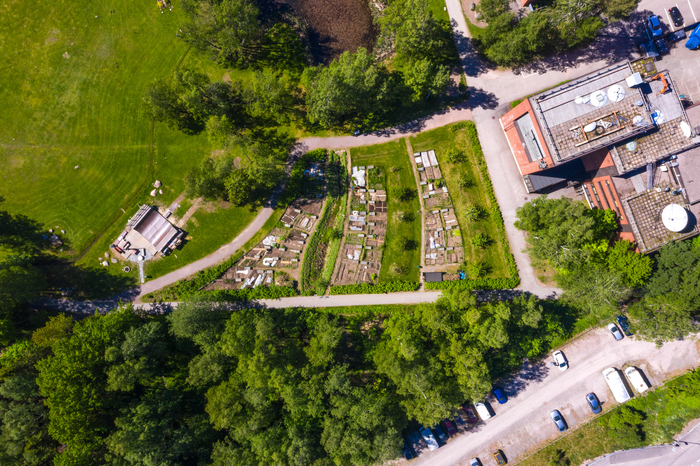A team of Aalto University researchers has created a new tool to assist urban planners in keeping urban developments in accordance with climate goals. The tool offers a metric that planners may use to improve carbon-neutral urban expansion planning, which is necessary for attaining carbon emission objectives.
 As cities expand into forests and agricultural land, what can be done to maintain the area's carbon storage capacity? Image Credit: Mikko Raskinen/Aalto University.
As cities expand into forests and agricultural land, what can be done to maintain the area's carbon storage capacity? Image Credit: Mikko Raskinen/Aalto University.
Forested and agricultural land are frequently encroached upon by urban expansion. This means that cities absorb carbon sinks as they grow, making it more difficult for municipalities and countries to meet the net-zero emissions targets required to avoid a climate catastrophe. The carbon storage (CS) factor, a novel metric, reflects how much carbon can be collected in planned urban constructions. The study published in Environmental Research Letters discusses it.
The CS factor allows urban planners to assess how a new development would impact the carbon balance of the city. Planners can ensure that urban development maintains or restores the region’s natural carbon storage capacity by comparing the amount of storage capacity lost (for example, via deforestation) with the CS factor of development plans that use different methodologies and technologies.
There are many tools available to increase the CS factor. Increasing wooden construction is a good option in some regions, but it’s also possible to store carbon in the soil using biochar and other tools, or to include new fast-growing plants in the landscape, or even through direct carbon capture and storage technologies. We hope planners will adopt this mindset and use the CS factor to help them plan sustainable urban growth.
Seppo Junnila, Professor, Aalto University
Seppo Junnila headed the research.
The CS factor was used by the researchers to assess how wooden construction in Finland’s capital region could compensate for deforestation caused by urban expansion. They discovered that by adopting the right wooden construction methods, up to 70% of future development might restore the lost forest’s carbon-storing capability. This would necessitate the use of carbon-storage technologies such as log or cross-laminated timber.
The research also demonstrated that similar outcomes could be attained with wooden construction in other parts of Europe, Asia, and Oceania. However, the researchers emphasize that increased wooden construction is only a viable option if trees are managed in a sustainable manner.
Our goal isn’t to encourage cities to expand into new areas but to provide planners with tools to mitigate the impact of development on carbon storage when forest clearing is unavoidable.
Seppo Junnila, Professor, Aalto University
Journal Reference:
Talvitie, I., et al. (2023). Can future cities grow a carbon storage equal to forests? Environmental Research Letters. doi.org/10.1088/1748-9326/acc677.